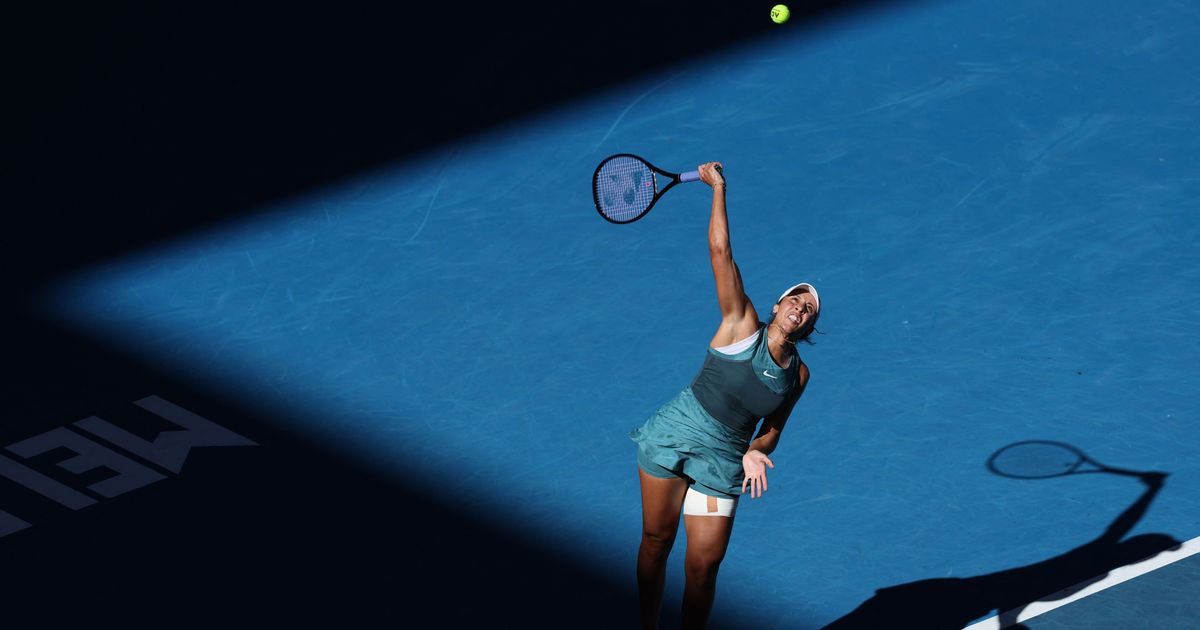
Madison Keys is only a month away from her 30th birthday, and she’s feeling her age.
“I feel like I’m getting older and everyone else is getting younger somehow,” the No.19 seed said with a laugh after defeating 24-year-old American compatriot Ann Li 6-4, 7-5 in the Australian Open first round.
Australian Open: Scores | Schedule | Draws
And it’s not just time that Keys feels has been passing her by, but many aspects of the game that she’s relied on ever since making her Hologic WTA Tour debut at 14 years old back in 2009.
“It’s getting to a point where I feel like everyone’s ball speed is pretty high,” she said. “Everyone moves really well. … It just got to the point where it was, like, ‘OK, if I really want to stay competitive, I have to do something different, because my body is breaking down a little bit more.’ I feel like everyone is catching up ball speed-wise. I can’t just hit people off the court every single match anymore.”
Her response? To rip it up and start again — much like her approach to the home renovations she’s also been undertaking with husband, coach and former ATP pro Bjorn Fratangelo.
“If you are going to rip things apart, you might as well rip everything apart, right?” she said.
Keys admits that she’s been somewhat resistant to change over the course of her career. After all, she’s been one of the most consistently successful players of her generation. She’s won nine Hologic WTA Tour titles and reached six major semifinals — the only player born after 1991 who’s made more is Aryna Sabalenka.
“I was literally the same for so long that the thought of any change was pretty scary for me,” Keys said. “I just didn’t want to do it because I felt like I was always so close to figuring it out that I would just figure it out.”
But in terms of crossing the line to win a Grand Slam trophy, Keys has remained close without quite figuring it out. Hence the overhauls — both to her equipment and her technique.
The former, said Keys, was the easy bit. Her new Yonex racquet has improved her control without sacrificing her power, and has been crucial in getting her through those days where her timing hasn’t quite been there.
“It just feels like I have the ability to kind of maneuver things a little bit easier,” she said. “I felt like in the past using my equipment, it was always either really good or really bad. I had a really hard time on days where I wasn’t really feeling it. Being able to tweak things, it felt really difficult to do that. This, I feel like I have a little bit more control over the average days and being able to find a happy medium.”
That was a quick decision — but Keys had to be dragged “kicking and screaming” into altering her service motion. That shot had been the bedrock of her game for over a decade, and she saw no reason to mess with it. But after a shoulder injury forced her to miss last year’s Australian Open and a hamstring injury ended her Wimbledon run in the fourth round, that was no longer the only factor.
“My body slowly started to fall apart a little bit with [my old serve]so that was kind of the final nail in the coffin where I had to actually make a change,” she said.
Keys and Fratangelo began tweaking the technique prior to last autumn’s Asian swing — making for an “uncomfortable” time in Beijing and Wuhan, which she played while knowing the serve wasn’t where she wanted it to be.
“Really trying to buy into that process took a little bit of patience,” she said.
A deep dive into the statistics helped. Keys and Fratangelo ran the numbers, and found that while her first-serve percentage in 2024 had been high, that was a double-edged sword.
“It was almost too high, to where I was playing it a little bit safe, but my first-serve points won wasn’t as high as it should be,” she said. “It took a while for me to be OK to serve at 62% or 58%. That was kind of the hard thing for me — just getting to the point of going for it more and getting more free points is actually better than making every single first serve. Stats definitely helped me there, and it kind of took me out of how I was feeling and put me into a little bit more of a reality.”
Back to Melbourne, and Keys’ stat sheet is positive on all counts. She won 73% of her first-serve points, and also managed to maintain a 71% first-serve percentage against Li. Unsurprisingly, she was only broken once. A clutch three-for-three break-point conversion rate also helped as she extended her winning streak to six, following a title run last week in Adelaide.
Keys’ upgraded game can expect to be tested by some of the biggest hitters on tour as she bids for a first Grand Slam title. She takes on powerful qualifier Elena-Gabriela Ruse next, followed by either fellow American Danielle Collins or home hope Destanee Aiava. Former Wimbledon champion Elena Rybakina or last year’s semifinalist Dayana Yastremska are potential fourth-round opponents.
Source: https://www.wtatennis.com/news/4198394/as-she-closes-in-on-30-keys-rips-it-up-and-retools-her-game


